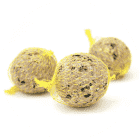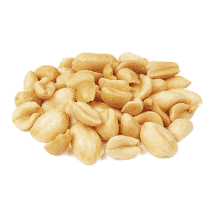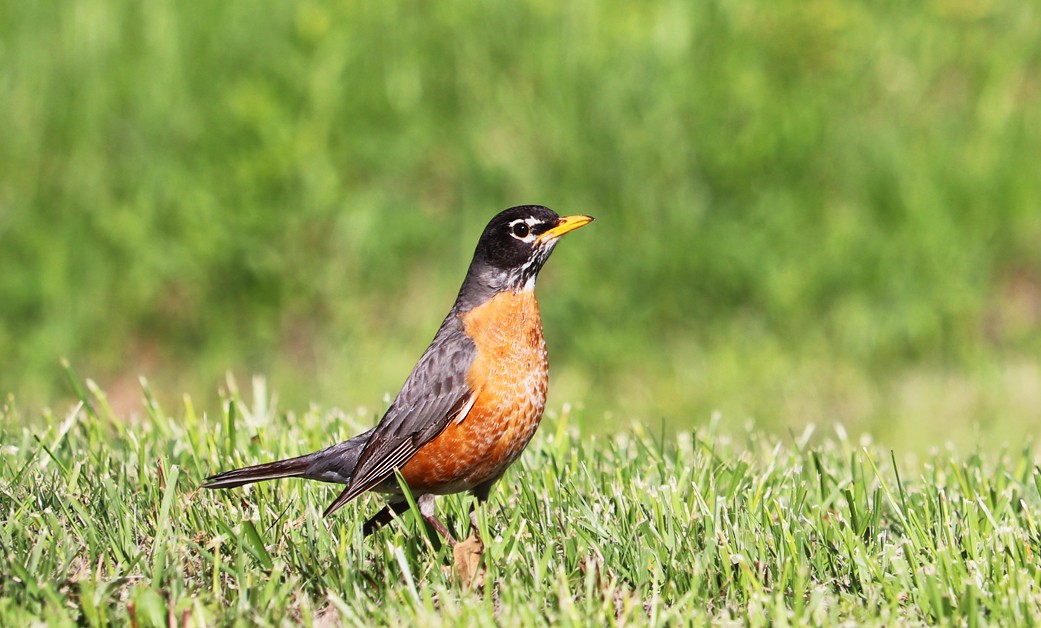American Robin
A species of True thrushes, Also known as Migratory Thrush, Robin Redbreast, Red Robin Scientific name : Turdus migratorius Genus : True thrushes
American Robin, A species of True thrushes
Also known as:
Migratory Thrush, Robin Redbreast, Red Robin
Botanical name: Turdus migratorius
Genus: True thrushes
Content
Description People often ask General Info
Description
The american Robin is the most common, and largest, thrush in North America. It's a bird of striking colors, including its vibrant, red-breasted plumage and pale blue eggs. It likes to feed on summer fruit and berries, but worms play an important role in its diet as well. This songbird is a state bird of Connecticut, Michigan, and Wisconsin. Its cheery song is considered one of the first signs of spring.
Size
23 - 28 cm
Life Expectancy
2-14 years
Nest Placement
Tree
Clutch Size
3 - 5 eggs
Incubation Period
1 - 3 broods
Number of Broods
12 - 14 days
Nestling Period
13 days
Feeding Habits
American Robin's diet is diverse, comprising roughly 40% invertebrates, including earthworms, insect larvae, and grasshoppers, and 60% fruits like chokecherries and juniper berries. While mainly consuming worms, they may also eat snails, small vertebrates, and insect-infested fruits. Nestlings receive animal prey, primarily worms. Some populations forage on beaches for insects and mollusks.
Habitat
American Robin are versatile in their habitat preferences, inhabiting a range of environments from dense woodlands to open grasslands and urban areas. They adapt to various altitudes, from lowland regions to mountainous terrains nearing the treeline. In breeding season, american Robin opt for woodlands, farmland, and urban spaces with shade trees, whereas winters see them in more open terrains and moist woods with abundant berry sources. Climate-wise, they are less prevalent in the hot Deep South as breeders, preferring temperate zones.
Nest Behavior
Female american Robin choose nest sites and construct the nests. They gather materials and craft a sturdy structure in preparation for egg-laying and subsequent parental care.
Nest Characteristics
The nests of american Robin are built on horizontal branches, structures, or the ground and composed of twigs, grass, and mud with fine dry grass lining. They measure 6-8 inches across and 3-6 inches high.
Dite type
Insectivorous
People often ask
General Info
Feeding Habits
Bird food type

Hulled Sunflower Seeds

Suet

Peanut Hearts

Fruit

Mealworms
Bird Feeder Type

Platform

Ground
Sounds
Call
Recording location: United States
Call
Recording location: United States
Song
Recording location: United States
Song
Recording location: United States
Behavior
American Robin typically exhibit a behavior of running across the ground in short bursts when foraging, abruptly halting to scope out prey, primarily earthworms. They exhibit a distinct head-tilt, which aids in detecting worms. In pursuit of culinary success, confrontations over food can lead to disputes among them. In the chillier months, american Robin's behavior shifts to a more arboreal lifestyle, forming large communal groups in trees. The onset of spring witnesses elaborate courtship displays, such as song expressions, tail fanning, wing quivers, and a unique bill-widening gesture between potential mates. The flight of the american Robin is characterized by its strength, swiftness, and directness.
Distribution Area
This bird breeds throughout most of North America, from Alaska and Canada southward to northern Florida and Mexico. 
Species Status
The species is not believed to approach the thresholds for the population decline criterion of the IUCN Red List (i.e., declining more than 30% in ten years or three generations), and is therefore evaluated as least concern. At one point, the bird was killed for its meat, but it is now protected throughout its range in the United States by the Migratory Bird Treaty Act. 
Scientific Classification
Phylum
Chordates Class
Birds Order
Perching birds Family
Thrushes Genus
True thrushes Species
American Robin 